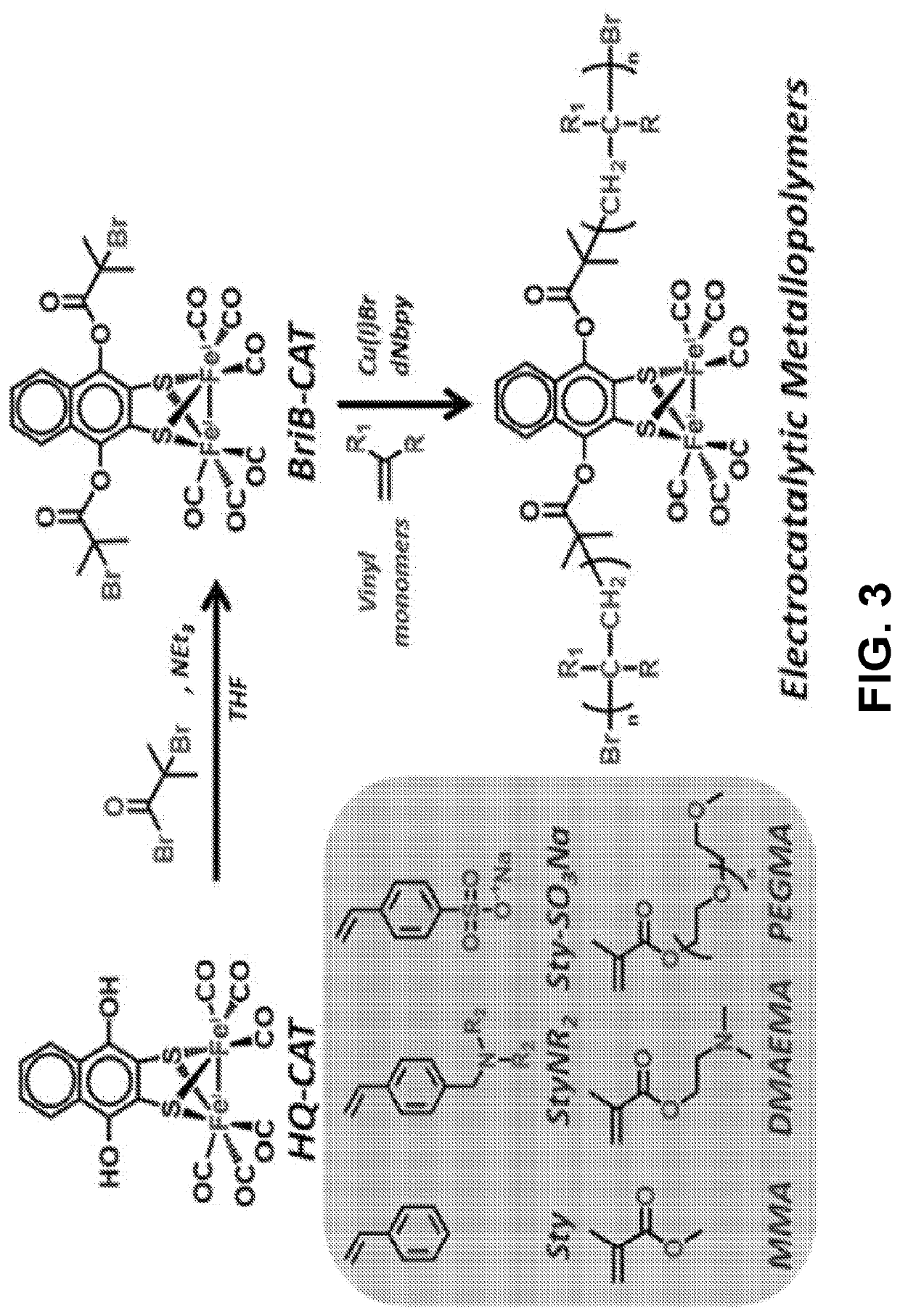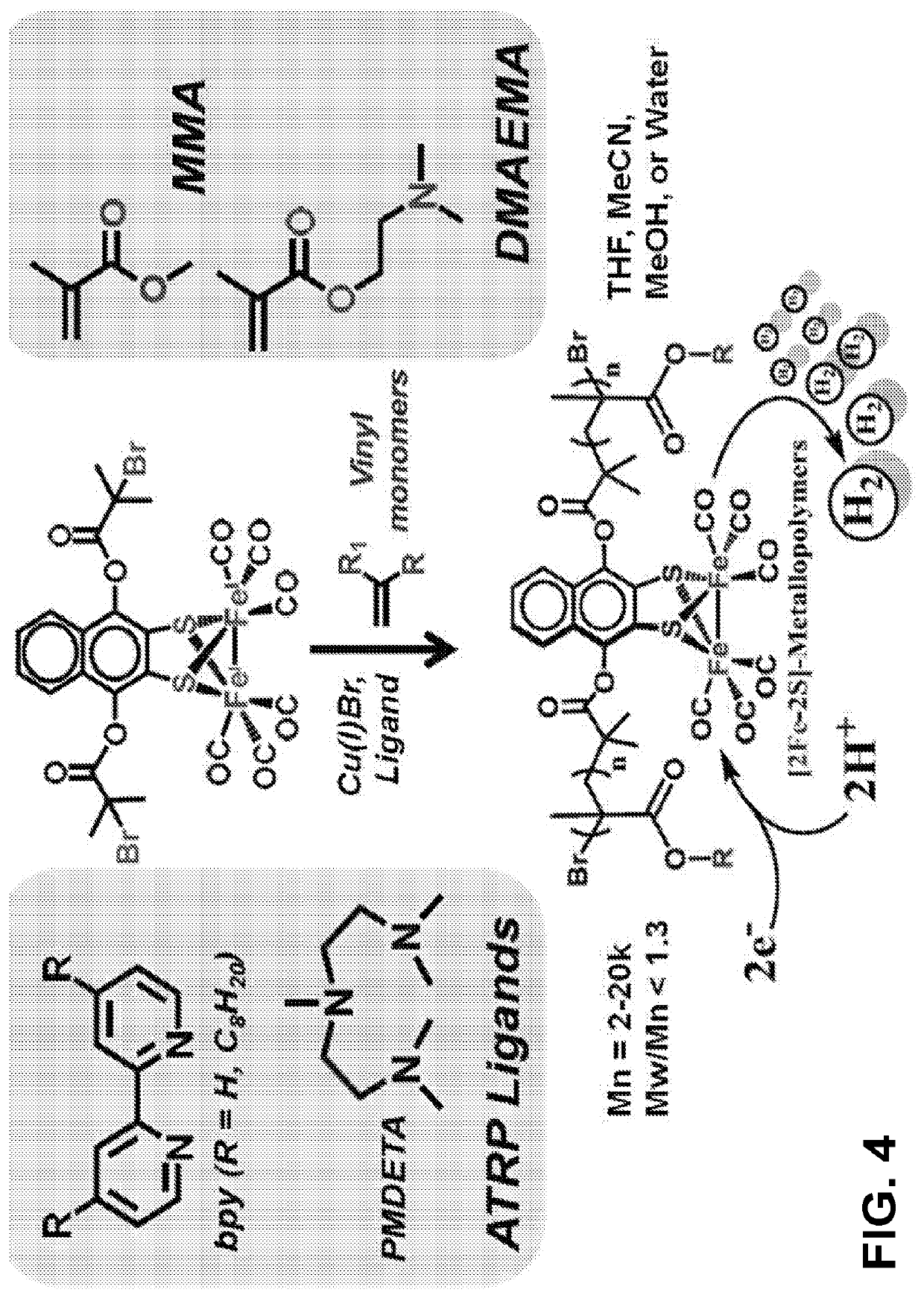Metallopolymers for catalytic generation of hydrogen
a technology of hydrogen and metals, applied in the field of metalopolymers, can solve the problems of rare and expensive platinum catalysts, and the development of approaches to enhance the air stability of this class of electrocatalytic complexes has proved even more challenging
- Summary
- Abstract
- Description
- Claims
- Application Information
AI Technical Summary
Benefits of technology
Problems solved by technology
Method used
Image
Examples
Embodiment Construction
[0057]As known to one of ordinary skill in the art, an atom transfer radical polymerization (ATRP) is a method of controlled radical polymerization (CRP) where an alkyl halide (e.g. R—X, X: Br or Cl) is activated by a transition metal complex (e.g. cuprous halide salts with amine, or N-heterocyclic ligands, such as CutBr with bipyridine ligands) to form an active radical that reacts with a vinyl group (i.e. monomer) and the intermittently formed radical reacts with additional monomer units for propagation to put monomers together in a piece-by-piece fashion. The ATRP method enables the creation of a wide range of polymeric materials with a controlled molecular weight and molecular weight distribution using monomers with different functionalities for specific target applications.
[0058]Referring now to FIG. 1-20, in one embodiment, the present invention features an electrocatalytic metallopolymer for generating hydrogen (H2). According to some embodiments, the metallopolymer may compr...
PUM
| Property | Measurement | Unit |
|---|---|---|
| HOMO energy | aaaaa | aaaaa |
| temperature | aaaaa | aaaaa |
| pH | aaaaa | aaaaa |
Abstract
Description
Claims
Application Information
 Login to View More
Login to View More - R&D
- Intellectual Property
- Life Sciences
- Materials
- Tech Scout
- Unparalleled Data Quality
- Higher Quality Content
- 60% Fewer Hallucinations
Browse by: Latest US Patents, China's latest patents, Technical Efficacy Thesaurus, Application Domain, Technology Topic, Popular Technical Reports.
© 2025 PatSnap. All rights reserved.Legal|Privacy policy|Modern Slavery Act Transparency Statement|Sitemap|About US| Contact US: help@patsnap.com



